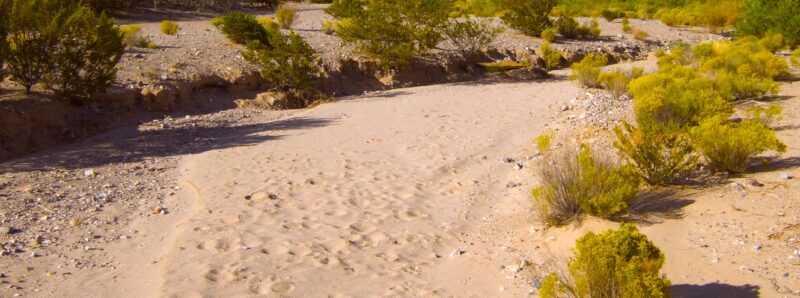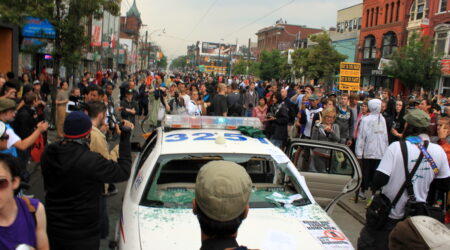Is climate change the result of human activity, or is it a natural phenomenon? For Nathan Sayre, Associate Professor and Chair of UC Berkeley’s Department of Geography, this frequent framing of an important modern question is misleading, as it fails to take into account the fundamental fact that humans are part of nature. “I’m struggling with efforts to link ecological and sociological processes,” explains Sayre, whose research largely focuses on the management and ecology of rangelands in the western United States and northern Mexico.
To delve deeper into the connections (and gaps) between human-caused and natural phenomena, Sayre teamed up with Social Science Matrix to lead a seminar focused on integrating methods, systems, approaches, and data from both the social and natural sciences. The goal is to improve researchers’ ability to holistically understand social-ecological systems, or “socionatures”.
As a case study, Sayre and fellow seminar participants examined arroyos, large gulches typically found in dry climates that intermittently fill with water during heavy rains. Sometimes called “washes” or “gullies,” arroyos typically have steep banks and can be hundreds of miles long. “Arroyos are not a particularly sexy topic among academics, but for a long time, they were a big deal,” Sayre explains. “They are also something of a puzzle because in about 1850, most of the watersheds in the southwestern U.S. did not have arroyos in them. Then in a very concentrated moment of time, between 1880-1905, every watershed in the southwest developed these arroyos.”
The question of arroyos has “significant implications—for the water table, farming, and flooding,” Sayre says. “For much of early 20th century, many geographers studied these arroyos with a certain amount of alarm that something dreadfully wrong had happened that must have to do with human impact, pointing to grazing, timber cutting, or mining. But the peculiar thing they learned is that some of these arroyos have existed for thousands of years. Whatever we did, arroyos are not unique to these intensive human activities. Arroyos are less important now, because we don’t rely as much on flood plains and have deep wells and can drill for water, but scientists never figured out a solution.”
Together with Assistant Professor Laurel Larson, an eco-hydrologist, Sayre is working to apply modern tools, such as radar and isotopic dating methods, to understand where and how arroyos formed. He notes that the project could have significant economic and legal implications; for example, if arroyos came from an irrigation system put in place by Native Americans thousands of years ago, it could re-shape modern water rights. More broadly, though, Sayre is interested in the mystery of why these massive gullies formed in the first place, as well as what it says about how scientists should think about socionatural phenomena.
“It’s a great example of, is it human or is it not human caused?” he explains. “People who studied arroyos have paid little attention to the social dimension of the causes behind them. They might say, it’s about deforestation of the uplands, or it’s about grazing. They don’t have a more sophisticated understanding of, what drove that? How can we think about underlying causes, as opposed to just proximate causes?”
In keeping with the mission of the Social Science Matrix, Sayre seeks to break down the walls that have traditionally kept the social and natural sciences from working together. “A lot of science has worked from the premise that there is nature and there are people, and they are separate,” he explains. “That undermines their ability to think about these things in more integrated way. Everything written about arroyos is based on whether they are natural or human-caused. The idea that there is no difference there—that people are part of natural systems—is a difficult line of inquiry when everything that has ever been launched started from the idea that it has to be one or the other. But humans are part of this landscape just like the rain is part of this landscape.”

